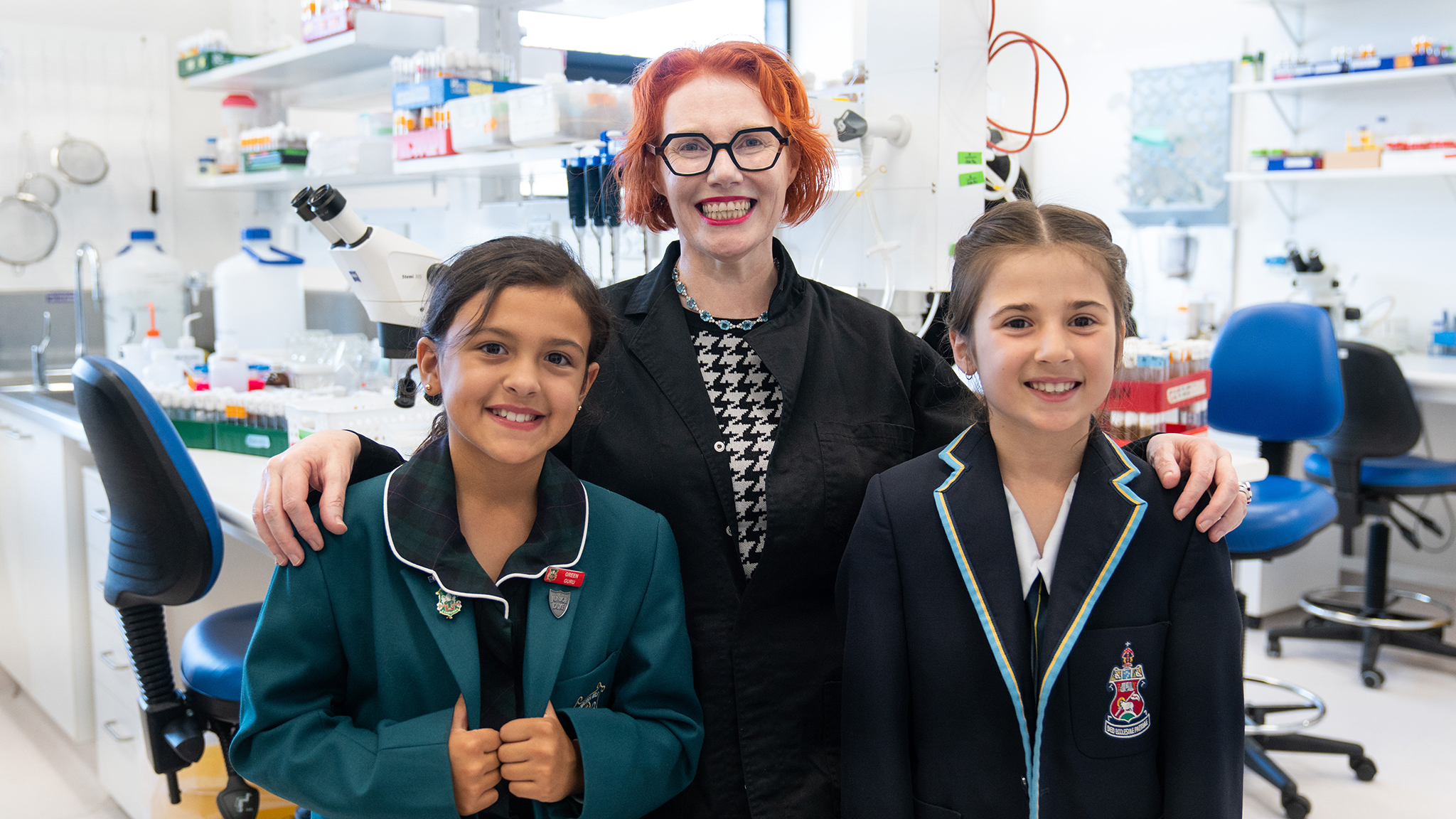Inspiring women in STEM: one pair of earrings at a time

Over the last six months, Zara and Mila, aged 8 and 9, have been carefully designing over 300 pairs of polymer clay earrings. After all their hard work, they set up a stall in Manuka and sold the earrings last Sunday, making more than $12,000.
But Zara and Mila are more than young businesswomen. They are science philanthropists who will donate all the money they raised from selling earrings to the Cancer Models Group led by Professor Leonie Quinn at the ANU John Curtin School of Medical Research (JCSMR).
Accessorise your passion for science
While Zara has wanted to make earrings for as long as she can remember, her passion for making hundreds of them for sale was awoken only after she heard from her mother, Milena, an avid philanthropist interested in supporting cancer research, about the work Professor Quinn is doing at ANU.
Using vinegar flies as a genetic model to understand how brain cancer develops, Professor Quinn’s team aims to develop new treatments for this deadliest cancer in children.
Eager to do something to support the fundamental research into brain cancer, Zara had a serious conversation with her best friend Mila, who also wants to be a scientist, asking if she could become her business partner in making and selling earrings to raise research funds for Professor Quinn.
Then came the team of “Z and M Co. Jewellery”. Together the duo learned to design and create unique and beautiful earrings for the cause of science. Eventually, the dedicated pair raised $12,760 for the brain cancer researchers.

Earrings made by school students Zara and Mila to support brain cancer research. Image: zandm.co/Instagram
Empowered together
On Monday, JCSMR welcomed its youngest fundraisers and their families to have a taste of the life of the scientists that their hard work was in support of.
Greeted by Professor Quinn, who thanked them for their hard work, Zara and Mila set off on a tour of the facilities.
“When I first learned about Zara and Mila’s fundraising efforts, I was genuinely awestruck,” recalled PhD student Brooke Kinsela, who taught the girls to use a microscope to observe vinegar flies during their tour in the brain cancer research lab.
“I felt so proud that at such a young age, they had developed a strong passion for science and worked extremely hard over a long period to fundraise for essential brain cancer research.”

Zara (C), Zara's brother Christian (L) and Mila spoke to PhD student Brooke Kinsela (R) during a tour of the cancer research facilities at JCSMR. Image: Tracey Nearmy/ANU
It was while in the lab that the pair were pleasantly surprised to find much of the group were early career female researchers—the Quinn lab has a 9:1 women-men ratio in a world where women are highly underrepresented in many STEM fields.
“I think it is so empowering for our next generation to see that the balance of female scientists is finally changing for the better,” said Naomi Mitchell, the Senior Research Officer in the Quinn Group.
Mothers make the best scientists
At the ANU Centre of Therapeutic Discovery (ACTD), the girls uncovered another revelation—many women researchers at JCSMR, including Dr Amee George, Fellow in the ACRF Department of Cancer Biology and Therapeutics and the Manager of ACTD, had children of similar ages to themselves.
“Above all in my list of things I have dreamed about becoming, I want to be a scientist, a jewellery maker and a mother,” said Zara, who, before the visit, was worried that she couldn’t be a good scientist and make it work if she was a mother too.
“Mothers make some of the best scientists,” Leonie imparted to the girls.
“It gives confidence to aspiring scientists that science and research are for all, and people can be successful in their career and also in raising a family.”

Zara (L), Mila (C) and Christian were shown the High-Content Screening Workstation by Dr Amee George at the ANU Centre of Therapeutic Discovery. Image: Calo Huang
With Dr George’s expert guidance, Zara and Mila were taught how to operate the Centre’s state-of-the-art robotics for screening therapeutic agents for treating diseases, including cancer.
When asked if they still wanted to be scientists when they grow up, the pair nodded eagerly.
“We love science!” both girls exclaimed.
Everyone, everywhere
At the end of the tour, Zara and Mila thanked their mums for supporting their passion for science, despite not being scientists themselves. This provides an important reminder that role models and advocates for women in science can come from all backgrounds.
Brooke hopes that the girls will take away from the lab tour an even greater curiosity and love for science and that they will continue to inspire our next generation of young scientists.

Zara and Mila (L) with Professor Leonie Quinn. Image: Tracey Nearmy/ANU
“As a senior researcher, I’m inspired by them, too,” said Professor Quinn, “We need to ensure that the younger generation is enabled to pursue their dreams to become scientists and make a difference in the world.”
The researchers are thinking of setting up an annual PhD student scholarship or a potential travel scholarship to help accelerate Australian brain cancer research. The funding donated by the young scientists-in-the-making could help support a future scientist to eliminate brain cancer.
